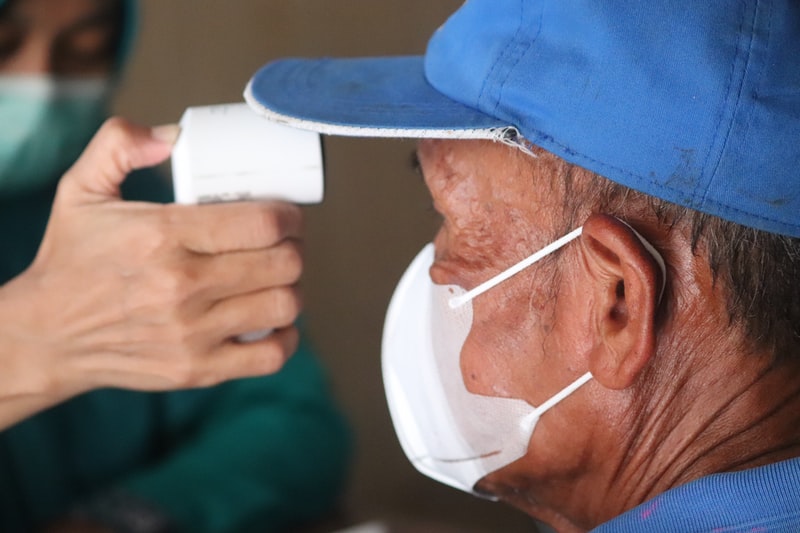Shamima Akhter (ThinkWell Bangladesh), Anooj Pattnaik (ThinkWell), Callum Pierce (ThinkWell), Afroja Yesmin (ThinkWell Bangladesh), Pak Trihono (ThinkWell Indonesia)
In the early days of the COVID-19 pandemic, Dr. Helal, the manager of a busy health facility in Bangladesh’s sprawling capital city of Dhaka was faced with an unexpected challenge: how would he pay for the hand gel and masks that were needed to keep his staff and patients safe? “The list of things I needed to pay for grew rapidly,” says Dr. Helal, “the Government acted quickly to mobilize money to my facility but to access that money I had to send dozens of forms and make several trips to the local admin office. Anytime my request changed, the process started all over again.” Like Dr. Helal, front-line responders around the world faced similar challenges in accessing and spending the money allocated to them for COVID-19. To understand why, we need to dive into the world of public financial management, or ‘PFM’.
PFM refers to the laws, regulations, and systems that govern how public funds are allocated, spent, and accounted for, including in and by the health system. In theory, a good PFM system ensures that money gets to where it is needed and is only spent on its intended purpose. In practice, however, PFM rules can be complex and hard to navigate, particularly for health managers from clinical backgrounds with limited training in administration and finance. When it works well, PFM directly supports the attainment of Universal Health Coverage (UHC) because it minimizes waste, directs resources to areas of greatest impact, and maximizes the value for money spent on health. The efficiency of good PFM is particularly valuable in settings where government spending on health is relatively low. In this blog, we shine a spotlight on some of the most important PFM barriers that front-line responders faced when responding to COVID-19. These insights draw from the experience of Bangladesh and Indonesia, where the authors have been working closely with the government to identify and address some of these “plumbing” challenges.
Indonesia is an upper-middle-income country with a decentralized health system and the world’s largest national health insurance scheme, Jaminan Kesehatan Nasional (JKN). Still, the national and subnational governments play a substantial role in financing health providers in the public sector, even as both public and private facilities receive payments under JKN. Since Indonesia decentralized its health authority in the early 2000s, District Health Office (DHO) priorities do not always match the national ones, and PFM capacities vary across the districts.
When COVID-19 struck in March 2020, Indonesia’s Government mobilized significant resources for the response, including reallocating money away from other front-line services. However, the lack of PFM capacity at the district level to revise budgets according to national government guidelines led to pools of funds for COVID-19 sitting at the national level. Moreover, the central ministries in charge of essential health services (EHS) like family planning (FP), maternal, new-born, and child health (MNCH), immunizations, and nutrition delayed issuing budget revision guidance (and even when they did, they revised it five times) to DHOs and frontline providers, leading to confusion on how to balance COVID-19 services with routine EHS ones. With a lack of funding and guidance flowing from the central and district levels, most frontline providers were left to manage their responses on their own. Those who had special autonomy status, known as BLUD, were able to flexibly use JKN capitation funds in their emergency and routine EHS provision. However, only 20% of over 10,000 public PHC facilities have BLUD status and thus, often did not have the funds at hand to respond in the way they needed to.
This resulted in a chaotic response at the frontline, with each provider charting their own course, and contributed to a large decline in EHS service use with slow recovery. For instance, basic immunization services reduced considerably in 2020 compared to 2019. The largest dip in coverage between the two years was in May (34.5%) and remained at least 20% lower than the previous year’s level until November 2020 where the coverage difference between the two years reduced to 13.9%.
Bangladesh has an extensive primary health care system, supporting the delivery of “good health at low cost.” Resources for the health sector run through the PFM system and has a standard set of rules for all budget planning, execution, and procurement. Though PFM rules give health managers some autonomy over how budgets are spent, decision-making is largely centralized. PFM in the health system is characterized by complexity, with fragmented funding flows and diversity of financing agents at each level of the health system.
When the COVID-19 pandemic struck in Bangladesh, the Ministry of Health and Family Welfare (MOHFW) explicitly set out to conserve funding for essential health services while ramping up spending on the pandemic response. In support of this goal, the Government launched a large economic stimulus package which included hundreds of millions of dollars of additional financing for the health sector. In addition to overall increases in funding, the MOHFW authorized facilities to reallocate some of their unspent budgets toward COVID-19 related activities and issued detailed technical guidance to facilities on how to reconfigure services in a way that would balance the pressure of COVID-19 response with routine service delivery.
Although the Government acted quickly to authorize funding reallocations, health managers faced many barriers in accessing this money for service delivery as they could not follow the PFM process requirement needed for the additional funding. If a manager wanted to use the funds to purchase essential commodities, procedures to comply with the current MOHFW “delegation of financial authority” rules, hindered rapid approval and utilization of funds. For health managers, this represented hours of time they could ill-afford in a crisis. It also meant that the Central Government needed to review hundreds of procurements plans from facilities across the country, which presented a formidable administrative burden. Additionally, because of years of centralized control of financing functions, many health managers did not have the training nor expertise to navigate the complex PFM requirements and unlock the funding available to their facility. Most health managers were largely unaware of the increased procurement flexibility attached to the reallocation of funds for the COVID-19 pandemic.
These pre-existing challenges further contributed to the severe disruption of essential health services delivery in Bangladesh during the early months of the pandemic. For instance, antenatal care visits declined by 34% in April 2020 compared to the previous year, with a gradual and uneven trend toward recovery in the period since.
So, what can the experiences of Bangladesh and Indonesia teach us about PFM in a pandemic context?
Lesson 1: PFM challenges cut across country contexts
Both Indonesia and Bangladesh experienced major constraints with their PFM system in the pandemic context, even though both countries have completely different health systems and health financing arrangements. While the chain of events and specific bottlenecks for accessing and utilizing the funds efficiently differed slightly across the two countries, similar PFM challenges resulted in the same outcome: front-line responders were blocked from rapidly receiving and spending funds that could have augmented their response and saved lives in both countries.
Lesson 2: Writing cheques is not enough in emergency situations like the COVID-19 pandemic
Governments and development partners mobilized massive amounts of domestic and external financing in both countries to respond to COVID-19. Despite these commitments of additional and reallocated funding, poorly set-up and executed PFM meant that much of the money failed to reach the front-line, where it was needed the most.
Lesson 3: PFM reforms don’t have to be difficult to be impactful
In Bangladesh, simple reforms like a more efficient and regionalized approval process for procurement plans, as well as increased support and training for those health facility managers engaging with the PFM system could help to address some of the major bottlenecks to efficient fund flow in the pandemic context and beyond. In Indonesia, the complexity of funding flows to district health offices, each with its own budget revision processes, needs to at least be reduced during a crisis response. The Government of Indonesia also needs to make the longer-term investment of strengthening the PFM capacity of these districts, especially in the more rural, Eastern part of the country. Finally, on the provider side in both countries, financial autonomy for facilities needs to be expanded, at least temporarily during a crisis and with the right accountability measures.
PFM is essential to the efficient and equitable functioning of any health system, even more so now when COVID-related economic disruption and the increasing demands of the pandemic response put health budgets under intense pressure globally. The shared experiences of Bangladesh and Indonesia shows that the importance of PFM cuts across contexts and have exposed opportunities for relatively simple reforms that can lead to potentially large gains in the capacity of the health system to deliver at speed and scale in both a crisis and steady state.


